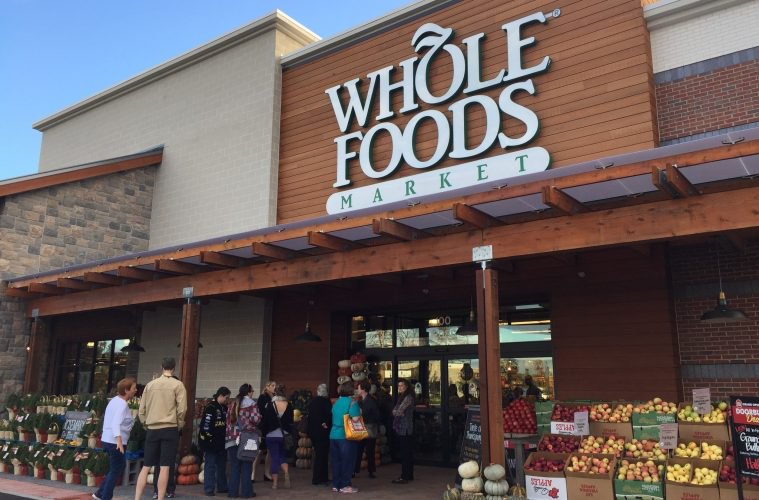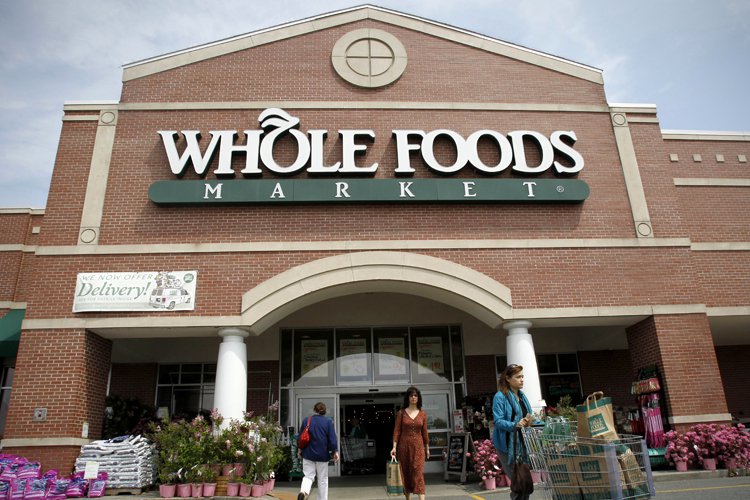
Right off the bat, I’d like to make it clear that this is not a hate piece against Whole Foods. I’ll be the first to admit that the store offers a wide range of organic and plant-based foods, making it easier for the health conscious among us to find quality organic food and beverage products.
However, that’s not all Whole Foods sells, and I’d like to bring further awareness to that. Although Whole Foods has an incredibly large supply of high-quality, plant-based, organic foods, the retailer also offers a ton of GMO, pesticide-ridden, and unhealthy products.
Although Whole Foods is marketed as a grocery store that sells the “finest natural and organic foods available,” that’s not the whole truth regarding the products they sell and the food they prepare in-house.
The Whole Truth About Whole Foods’ Prepared Foods
To start, let’s take a look at the foods Whole Foods actually cooks in-house. If you’ve never been to Whole Foods, they have an awesome prepared food bar. Not only is much of the food delicious, organic, and vegan, but there’s a wide range of items to choose from.
Envision a long buffet bar filled with cold foods, another filled with hot foods, and then tons of other prepared foods surrounding the store based on different dietary preferences. Whether you’re looking for baked goods, desserts, salads, cold foods, hot foods, pizza — you name it, Whole Foods probably makes it.
And although some of these foods are truly high-quality and healthy for the body, some are not quite as healthy as you’d expect to be eating at a place called “Whole Foods.” For example, in recent years, Whole Foods has been facing a lot of criticism for the oils they use in their prepared foods.
A lot of the food Whole Foods makes contains canola oil, a low-grade oil that isn’t very good for the body. It is estimated that 95% of canola oil in Canada is genetically modified. The comparison between the number of GMO and non-GMO crops in the U.S is similar, as the U.S. is the leading producer of GM foods globally. Since so many of the crops grown in North America are GM, cross-contamination can easily occur between GMO and non-GMO crops.
Despite the “Organic” sticker on canola oil, there is still a risk of GMO contamination in some crops, particularly ones that are predominantly GMO. GMO contamination can happen in several ways:
- cross-pollination between GMO and non-GMO crops
- trace amounts of GMO ingredients found in animal feed
- seeds traveling by wind
- migratory birds taking root in the soil of an organic farm
- ingredient suppliers that co-mingle various sources.
That being said, of course organic is always the better option than conventional, but it’s important to note that canola oil is still unhealthy if it’s organic and can still be contaminated with GMOs. Whole Foods maintains that they use a non-GMO canola oil in their foods, although they do sell GMO canola oil in their stores. Keep in mind that pesticides are still used on non-GMO products, because that is not the equivalent to organic.
In addition, when it comes to low-grade oils like canola oil, they still pose health risks even when they’re organic or “expeller-pressed.” They perform similarly in the body as things like margarine and animal fat do, because they still coagulate in your blood (which is associated with blood clotting).
This isn’t the only concern regarding their prepared foods, either. Popular blogger Food Babe reported: “On several occasions, I’ve found less than stellar ingredients hidden in their prepared foods – like GMOs, hidden MSG and the over use of cheap oils like corn, soy, and canola, which I will get to in a minute.”
Again, although lots of the food prepared by Whole Foods is genuinely organic and healthy, it’s clear that not all of the food is healthy. This serves as an excellent reminder for us all to always read ingredients, regardless of where we’re buying our food!

Inspiration and all our best content, straight to your inbox.

Other Issues With Whole Foods
Whole Foods is currently under public scrutiny after launching their produce rating program. Tons of organic farmers have vocalized their concerns surrounding this new rating system, as they claim it devalues the organic label and threatens their business models.
Whole Foods’ rating system, Responsibly Grown, was designed to provide customers with more information about how their food is grown. However, suppliers must pay for this rating, resulting in a steep cost for organic farmers.
Organic produce farms are often smaller farms that aren’t owned and operated by rich and powerful corporations like Monsanto. The organic certification is costly enough already, and many farmers can barely afford that, let alone an additional rating system.
The new rating system takes into account much more.
Whole Foods is asking its suppliers to pay a fee to get into the program, then answer a long questionnaire. There are questions about how they protect the soil and wildlife on their farms, whether they limit their use of pesticides, how they conserve energy and irrigation water, and how they treat their workers.
The rating system essentially grades farmers on their produce in regards to pesticide usage, conservation efforts, water usage, and more. Based on these findings, they’re graded as Unrated, Good, Better, or Best. This in theory could create more transparency between farmers and consumers, which would be awesome.
However, farmers have been quick to point out holes in the program. NPR reported:
But here’s what is making organic farmers angry. At a Whole Foods store in Washington, D.C., I found nonorganic onions and tomatoes, presumably grown with standard fertilizers and pesticides, that were labeled “Best.” A few feet away, I found organic onions and tomatoes that were graded merely “Good” or just “Unrated.”
This isn’t the only large-scale issue with Whole Foods. Just last year, Whole Foods was under public scrutiny for supporting GMOs and selling so many GMO foods in their stores. You can read more about that in the following CE article:
Whole Foods Caves To Monsanto To Kill GMO-Labelling Bill?
GMOs aren’t the only cause for concern within the ingredients lists of some of the foods sold at Whole Foods. CE covered another story on this, which you can read below:
Final Thoughts
To be clear, Whole Foods still sells some awesome products. They have a wide range of organic produce and serve as a massive supplier of plant-based and non-GMO foods that are rarely found in conventional grocery stores. For example, I visited the Whole Foods in Hawaii recently and was thrilled to purchase lots of organic plant-based foods, including some products I hadn’t been able to find in Canada, such as the vegan Beyond Meat burgers.
It’s clearly convenient for those of us interested in health to go to a big box store and be able to purchase the products we love that are not only delicious, but healthy for the body as well. However, it’s equally clear that these aren’t the only products Whole Foods sells, as they do sell some non-organic produce and GMO foods.
I’d encourage you to check out some local farmer’s markets instead of going to Whole Foods once in a while. Although local doesn’t mean organic, many markets typically offer organic options, and it’s really nice to be able to support local farms. Plus, the prices are typically a lot more affordable at organic markets than at Whole Foods, where they inflate many of the prices.
At the end of the day, this is a really important lesson for all of us to remember to read the ingredients in everything we buy, whether that be food, drinks, body products, cleaning supplies, or whatever else. Just because something is marketed as being “all-natural” or is sold at a health food store, doesn’t necessarily mean it’s healthy.
Having Trouble Losing Excess Weight?
Having trouble losing excess weight? This could be one of the biggest reasons why.
We know so much about food now yet much of the population is overweight and unhealthy because of the quality of our food and our perception about food.
Luckily there’s a quiz that you can take to find out where you stand on food addiction. You can take it here.
After you will get results and specific information based on your score. Try the quiz!
Source Article from http://feedproxy.google.com/~r/Collective-evolution/~3/2MYw9UbcQPo/
Related posts:
Views: 0
 RSS Feed
RSS Feed

















 September 30th, 2017
September 30th, 2017  Awake Goy
Awake Goy 




 Posted in
Posted in  Tags:
Tags: 
















